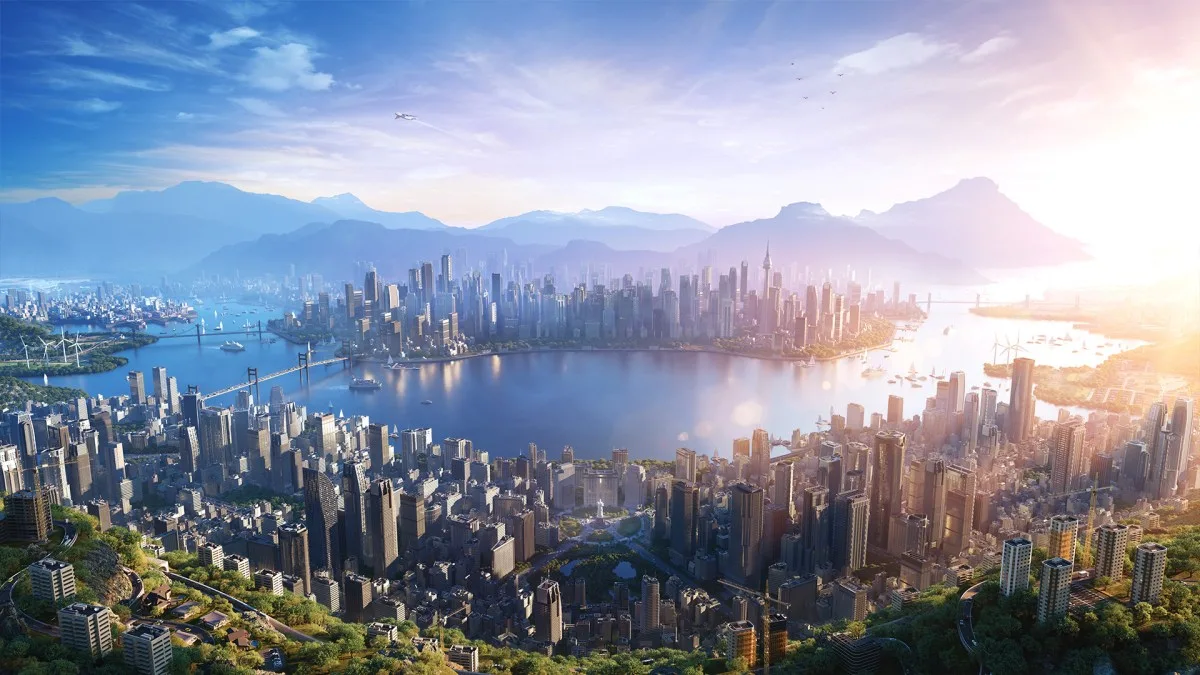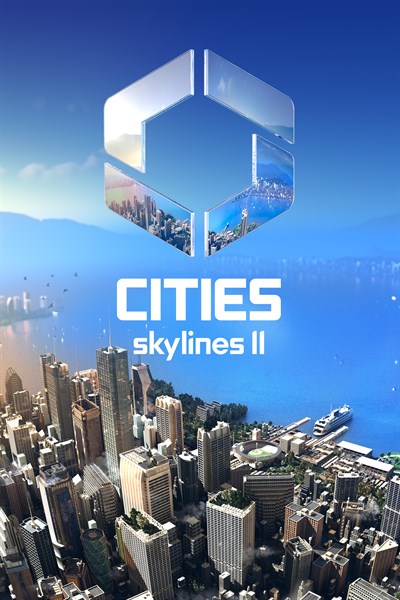Since its launch in 2015, Cities: Skylines has enjoyed an eight-year reign as the optimal city builder, offering unrivalled freedom and resources that let players craft their perfect empires. Now, Paradox is set to take that one step further with Cities: Skylines II, the sequel to the long-running simulator.
Cities: Skylines II promises vast improvements to the city-building experience you know and love, while introducing exciting new elements that make your metropolis feel like they’re living and breathing alongside you. There are new economic simulations, traffic systems to manage the flow of your city, and realistic weather patterns that present unique challenges. Your cities now also have a buildable area of 172 square KM and can boast over 4,000 building assets – a huge expansion on the first base game.
Not only that, Cities: Skylines II has been built from the off with Xbox console players in mind, to provide the best possible experience for all those budding architects who prefer playing with a controller. We were lucky enough to speak to Mariina Hallikainen, CEO of Cities: Skylines studio Colossal Order, to learn more about what makes Cities: Skylines II the perfect sequel regardless of how and where you play.
Evolution For Players
PC players will feel right at home with the controls of Cities: Skylines II, but the delight here is now console players and their needs have been top-of-mind since development began. Hallikainen tells us that crafting a convenient console experience has been a “crucial part” of the game’s design.
“The game was designed for all platforms simultaneously, meaning it is the same code base, same UI, same achievements for all players. This allows for the same kind of experience, no matter on what device you decide to play on,” Hallikainen says.
“Unlike its predecessor Cities: Skylines II has been developed for multiple platforms from the start. It doesn’t matter if you want to design the perfect traffic network, the most efficient public services or just build the most beautiful skyline imaginable, everything is more fun and more relaxing when you do it from your couch.”
The UI and controls have been expertly crafted and tested with the controller in mind, too. Hallikainen tells us that you’ll be able to navigate the UI seamlessly whether you’re using a controller or a mouse and a keyboard.

Whole New World
Cities: Skylines II has been built to take onboard all the lessons learned from the making of its predecessor — as well as fan feedback — in order to make it feel more alive than ever before.
The most noticeable change up front is that Cities: Skylines II is much, much bigger. Each map is made up of 441 tiles, which can be unlocked in any order you want.
“You can grow a continuous city from the starting tiles, create smaller separate areas connected by pre-built highways in the map or anything in-between,” Hallikainen tells us. “The cities can become massive and your imagination is the only limit!”
“The cities can become massive and your imagination is the only limit!”
The visuals of Cities: Skylines II take advantage of the latest graphics technologies as well, presenting the cities in much greater detail.
“Lighting is physics-based and the sun’s position depends on the latitude of the map, giving the game a more realistic look that strives to also replicate the lighting conditions of different areas around the earth faithfully,” Hallikainen adds.
The simulation in Cities: Skylines II has been overhauled and is much more detailed than before; the inhabitants of your city – be it citizens, vehicles, businesses — react to their environment, the changes around them, and have entire paths that you can observe.
“It supports a redesigned economic system which is built on real-life economic models,” Hallikainen tells us. “This means that citizens in Cities: Skylines II earn money and spend it on living, travelling and activities in their free time.”
Companies find locations with good connections to resources and access to the workforce, and adjust their production in real time to help boost their profitability. The various new material resources allow for a deeper business simulation as the companies sell, buy, import, export and refine the resources into goods that are then sold to citizens and other companies.
The pathfinding and traffic AI have also been reworked to make for a more immersive experience. Vehicles can make decisions on the fly that will improve the flow of traffic, such as changing lanes, and will even try to give way to emergency vehicles passing by. It’s smarter, reactive, and makes for hyper-realistic management.
“Another cool and new thing is the introduction of parking spaces, which really makes the cities feel more realistic,” Hallikainen adds. “The citizens need to find a parking space and that will further drive up the importance of handling roads and traffic.”

Power to the People
Another striking new addition to Cities: Skylines II is the Lifepath feature, which allows you to track your citizens, who they are, what they do, and where they’re going at any time.
Each citizen has their own income and expenditures, and all of them are intertwined to affect the choices they make, such as where they live or where they want to shop – and how they want to get there.
“Citizens have been an integral part of Cities: Skylines since the beginning, so in Cities: Skylines II we wanted to give them more agency through the advanced AI and simulation, as well as a way to meaningfully voice their opinions about the city,” Hallikainen explains.
Even with all this added depth, the economy simulation is designed to balance itself out in most cases in order to provide the player a smooth playing experience, Hallikainen assures. The economy simulation helps beginners and newly-founded cities to succeed, but more experienced players can delve deeper into the simulation and work out its intricacies to fine tune their city more.

Changing with the Seasons
Seasons are a brand-new feature for Cities: Skylines, and they go far beyond your typical expectation of seeing sun in the summer and snow in the winter. Hallikainen tells us that that they’ll recreate realistic weather patterns found on different sides of the globe, an updated pollution system where air pollution now takes wind direction into account, and groundwater options for freshwater pumping.
“Seasons work differently on each map as the exact position and latitude of the map defines how the weather and thus the seasons will affect the gameplay,” Hallikainen explains. “Seasonal variations will have an impact on the electricity consumption, traffic and weather which will give players additional problems to adjust to. Players can expect familiar challenges as in Cities: Skylines II, but the added depth in the simulation will provide new challenges to tackle for those that are well-versed in crafting a digital metropolis.
However, the AI is perfectly balanced to support newcomers to the series, and players can familiarise themselves with the game’s wealth of features and assets at their own pace.
“Even with all this added depth, the economy simulation is designed to balance itself out in most cases in order to provide the player a smooth playing experience,” Hallikainen explains. “The economy simulation helps out beginners and newly-found cities to succeed but more experienced players can delve deeper into the simulation and work out its intricacies to fine tune their city more.”
So whether you’re a seasoned architect ready to take your building game to the next level, or an aspirational overlord raring to put down your very first road tile, Cities: Skylines II is poised to welcome you into its world, and its bigger, bigger and bolder than you could ever imagine.
Cities: Skylines II is heading to PC, Xbox Series X|S and Xbox Game Pass on October 24th.

Cities: Skylines II
Paradox Interactive

Website: LINK


Schreibe einen Kommentar
Du musst angemeldet sein, um einen Kommentar abzugeben.